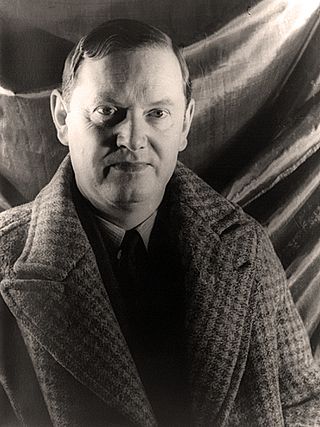
Arthur Evelyn St. John Waugh was an English writer of novels, biographies, and travel books; he was also a prolific journalist and book reviewer. His most famous works include the early satires Decline and Fall (1928) and A Handful of Dust (1934), the novel Brideshead Revisited (1945), and the Second World War trilogy Sword of Honour (1952–1961). He is recognised as one of the great prose stylists of the English language in the 20th century.

William Wilkie Collins was an English novelist and playwright known especially for The Woman in White (1859), a mystery novel and early "sensation novel", and for The Moonstone (1868), which established many of the ground rules of the modern detective novel and is also perhaps the earliest clear example of the police procedural genre.

Amelia Opie was an English author who published numerous novels in the Romantic period up to 1828. Opie was also a leading abolitionist in Norwich, England. Hers was the first of 187,000 names presented to the British Parliament on a petition from women to stop slavery.
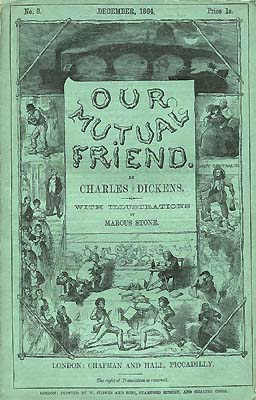
Our Mutual Friend, written in 1864–1865, is the last novel completed by Charles Dickens and is one of his most sophisticated works, combining savage satire with social analysis. It centres on, in the words of critic J. Hillis Miller, quoting the book's character Bella Wilfer, "money, money, money, and what money can make of life".

Raistlin Majere is a fictional character from the Dragonlance series of books created by Margaret Weis and Tracy Hickman. Raistlin played an extensive role in the two main series of books, particularly in Dragonlance Legends in which he was both primary protagonist and antagonist. He is twin brother to Caramon Majere, half-brother to his protective sister Kitiara uth Matar, and a significant member of the Heroes of the Lance. In the animated movie adaptation, Dragonlance: Dragons of Autumn Twilight, Raistlin was voiced by Kiefer Sutherland.

All the Year Round was a Victorian periodical, being a British weekly literary magazine founded and owned by Charles Dickens, published between 1859 and 1895 throughout the United Kingdom. Edited by Dickens, it was the direct successor to his previous publication Household Words, abandoned due to differences with his former publisher.
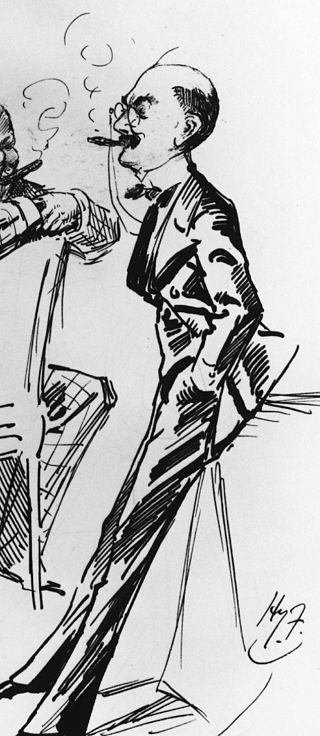
Thomas Anstey Guthrie was an English author, most noted for his comic novel Vice Versa about a boarding-school boy and his father exchanging identities. His reputation was confirmed by The Tinted Venus and many humorous parodies in Punch magazine.
Black robe, blackrobe or variant may refer to:

The Woman in White is Wilkie Collins's fifth published novel, written in 1859 and set from 1849 to 1850. It is a mystery novel and falls under the genre of "sensation novels".
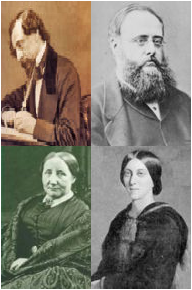
"A House to Let" is a short story by Charles Dickens, Wilkie Collins, Elizabeth Gaskell and Adelaide Anne Procter. It was originally published in 1858 in the Christmas edition of Dickens's Household Words magazine. Collins wrote the introduction and collaborated with Dickens on the second story and ending, while Gaskell and Proctor wrote the remainder.
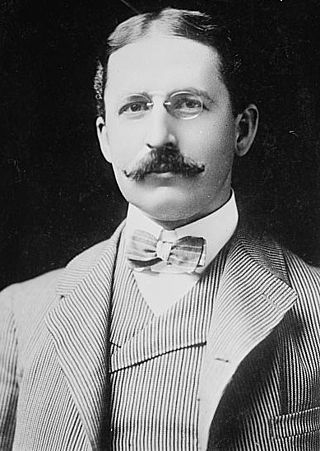
John Elbert Wilkie was an American journalist and Chief of the United States Secret Service from 1898 to 1911.
Blind Love was an unfinished novel by Wilkie Collins, which he left behind on his death in 1889. It was completed by historian and novelist Sir Walter Besant.
The bibliography of Charles Dickens (1812–1870) includes more than a dozen major novels, many short stories, several plays, several non-fiction books, and individual essays and articles. Dickens's novels were serialized initially in weekly or monthly magazines, then reprinted in standard book formats.

Catherine Elizabeth Macready Perugini was an English painter of the Victorian era and the daughter of Catherine Dickens and Charles Dickens.

Frances Minto Elliot (1820–1898) was a prolific English writer, primarily of non-fiction works on the social history of Italy, Spain, and France and travelogues. She also wrote three novels and published art criticism and gossipy, sometimes scandalous, sketches for The Art Journal, Bentley's Miscellany, and The New Monthly Magazine, often under the pseudonym, "Florentia". Largely forgotten now, she was very popular in her day, with multiple re-printings of her books in both Europe and the United States. Elliot had a wide circle of literary friends including Charles Dickens, Anthony Trollope and Wilkie Collins. Collins dedicated his 1872 novel, Poor Miss Finch, to her, and much of the content in Marian Holcolmbe's conversations in The Woman in White is said to be based on her.
Lorien Legacies is a series of young adult science fiction books, written by James Frey, Jobie Hughes, and formerly, Greg Boose, under the collective pseudonym Pittacus Lore.

Who Killed Zebedee? is a short detective story by Wilkie Collins, first published under the alternate title "The Policeman & The Cook" in serial form in 1881. A young wife is convinced that, while sleepwalking, she has murdered her own husband, John Zebedee. Together, a young constable and the cook from the couple's final lodgings attempt to uncover the truth.
Man and Wife was Wilkie Collins's ninth published novel. It is the second of his novels in which social questions provide the main impetus of the plot. Collins increasingly used his novels to explore social abuses, which according to critics tends to detract from their qualities as fiction. The social issue which drives the plot is the state of Scots marriage law; at the time the novel was written, any couple who were legally entitled to marry and who asserted that they were married, either before witnesses or in writing, were regarded in Scotland as being legally married.
Hide and Seek was Wilkie Collins' third published novel. It is the first of his novels involving the solution of a mystery, the elements of which are clearer to the reader than to the novel's characters. Suspense is created from the reader's uncertainty as to which characters will find out the truth, when and how.

Chivalry of a Failed Knight is a Japanese light novel series written by Riku Misora and illustrated by Won. The story is set in a fantasy world where the titular "failed knight" Ikki Kurogane meets Stella Vermillion, who is considered a prodigy. The two make up for each other's weaknesses and form a relationship while training to become great knights. The first volume was released on July 15, 2013. An anime adaptation aired in late 2015.
















